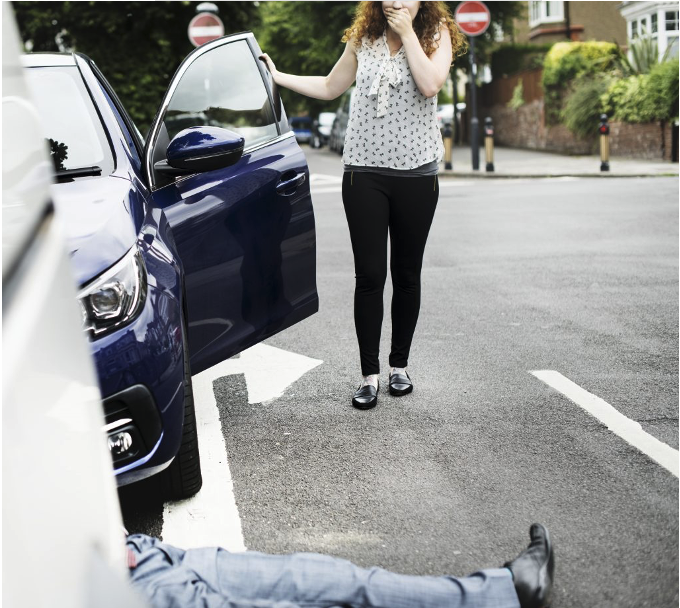
Pedestrian accidents are happening more often than you might think. Every year, thousands of people are injured or killed while simply walking.
According to recent reports, over 7,000 pedestrians were killed in traffic accidents in the United States in 2021 alone. That's a frightening number. But why do these accidents happen, and how can you avoid them? Before diving in, remember that pedestrian injury attorneys can help you if you have been hurt in a pedestrian accident.
Let’s take a closer look:
Pedestrian accidents can happen for several reasons, and many are preventable. Understanding the causes can help you be safer, whether walking or driving.
Distracted driving is one of the biggest causes of pedestrian accidents. Texting, eating, or adjusting the radio take drivers’ eyes off the road. A pedestrian could step onto the road in those few seconds, and the driver wouldn’t notice until it was too late.
Drivers are required to yield to pedestrians at crosswalks, but many don’t. Some may not see the pedestrian until the last minute, while others might ignore the rule. This failure to yield puts pedestrians at risk, especially at busy intersections.
Speeding is dangerous for everyone, but especially for pedestrians. The faster a car moves, the less time the driver has to react. Even mistakes can lead to severe accidents.
Alcohol and drugs impair a driver’s ability to react quickly and make good decisions. A driver under the influence may not see a pedestrian or miss the distance needed to stop. This makes DUI one of the leading causes of accidents.
Rain, snow, and fog reduce visibility and make roads slippery. Drivers might struggle to see pedestrians or have difficulty stopping in wet conditions, leading to accidents.
Sometimes, pedestrian accidents happen because the roads are not designed well. It's hard for pedestrians to stay safe when there are sidewalks, crosswalks, or pedestrian signals. Poorly lit areas also increase the risk of accidents at night.
Pedestrians can also make mistakes that lead to accidents. Some cross the road without looking or use the ones while walking. Others may walk where they shouldn’t, such as in the middle of the road, which puts them in harm’s way.
If you're behind the wheel, there are several steps you can take to help prevent pedestrian accidents.
You must keep your focus on the road at all times. Avoid distractions like texting, eating, or using the car's touchscreen. Your full attention is needed to notice pedestrians, especially in crowded areas.
Always follow traffic laws, especially around pedestrian crossings. Yield to pedestrians at crosswalks and stop when they have the right of way.
Lower your speed in areas where pedestrians are likely to be, such as near schools, parks, or residential neighborhoods. Slower speeds give you more time to react if someone steps into them.
At night, it’s harder to see pedestrians. Ensure your headlights work properly and slow down in poorly lit areas. Watch for pedestrians wearing dark clothing who may be harder to spot.
As a pedestrian, there are many things you can do to stay safe while walking near traffic.
Whenever possible, cross the road at a crosswalk or intersection. These areas are designed for pedestrian safety; drivers must see people crossing there.
Wear bright or reflective clothing, especially when walking at night. This makes it easier for drivers to see you. Consider carrying a flashlight or wearing reflective gear if it's dark or raining.
Just as drivers need to stay focused, so do pedestrians. Avoid using your phone while crossing the street; always watch the traffic around you.
Pay attention to pedestrian lights and only cross when it’s safe. Don’t rush across the street when the light is about to change.
If there is a sidewalk, use it. If you must walk on the road, walk facing traffic so you can see oncoming cars and react if necessary.
City planners also play a significant role in preventing pedestrian accidents. Better crosswalks, pedestrian signals, and sidewalks can make a huge difference in keeping people safe. Some cities have added pedestrian bridges or improved street lighting in high-traffic areas. These improvements give pedestrians a safer walking environment and reduce the risk of accidents.
If you’re involved in a pedestrian accident, the first thing to do is get medical help. Even if you don’t feel injured immediately, some injuries can appear later. It’s also essential to document the scene by taking pictures and getting contact information from witnesses. Finally, it may be helpful to consult a personal injury lawyer to understand your rights and explore any legal options you might have.
Pedestrian accidents are often preventable, whether you're a driver or a pedestrian. You can reduce the risk of these accidents by staying alert, following traffic laws, and taking simple safety steps. Remember, safety is a shared responsibility—drivers and pedestrians must work together to keep the roads safe for everyone.